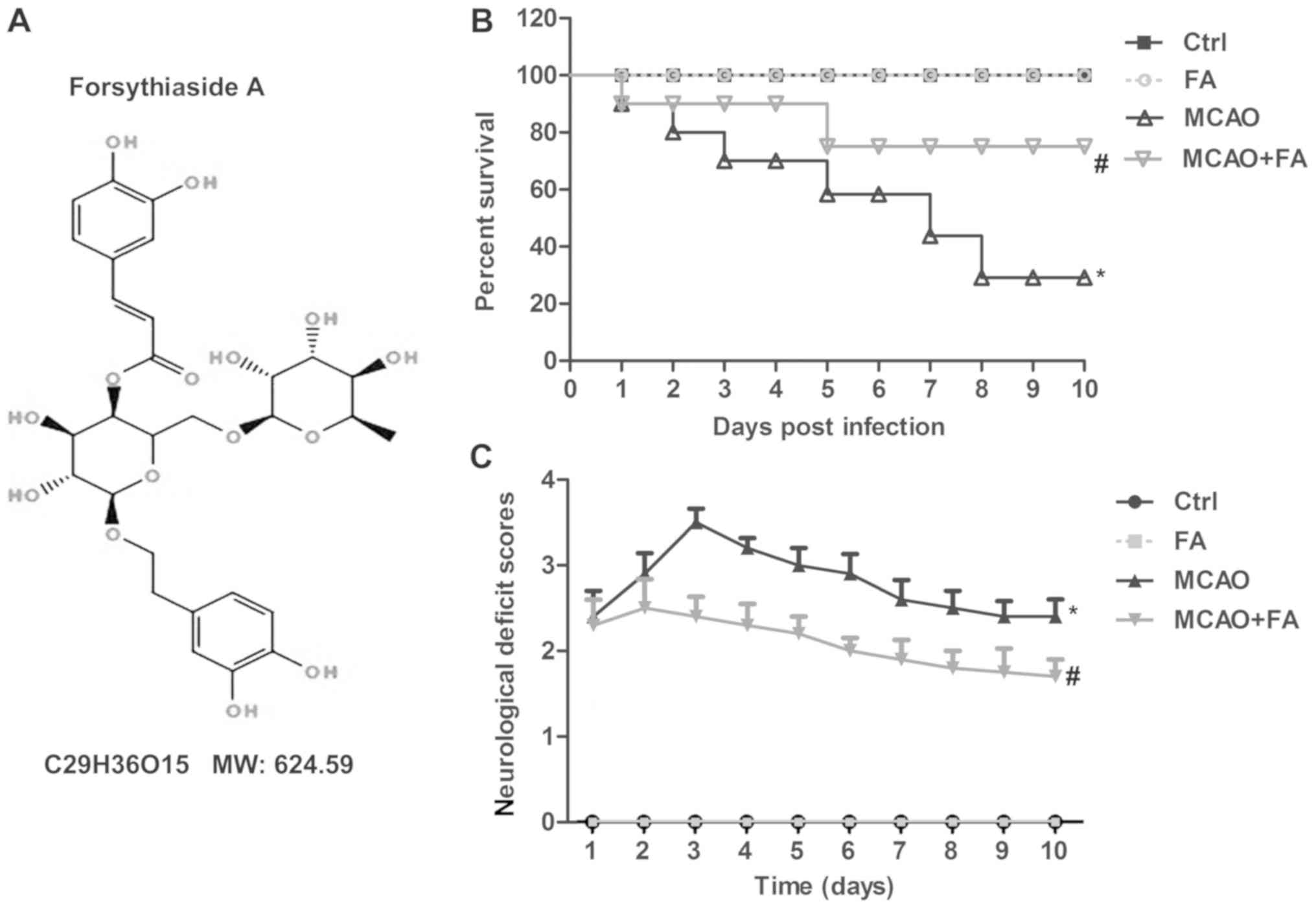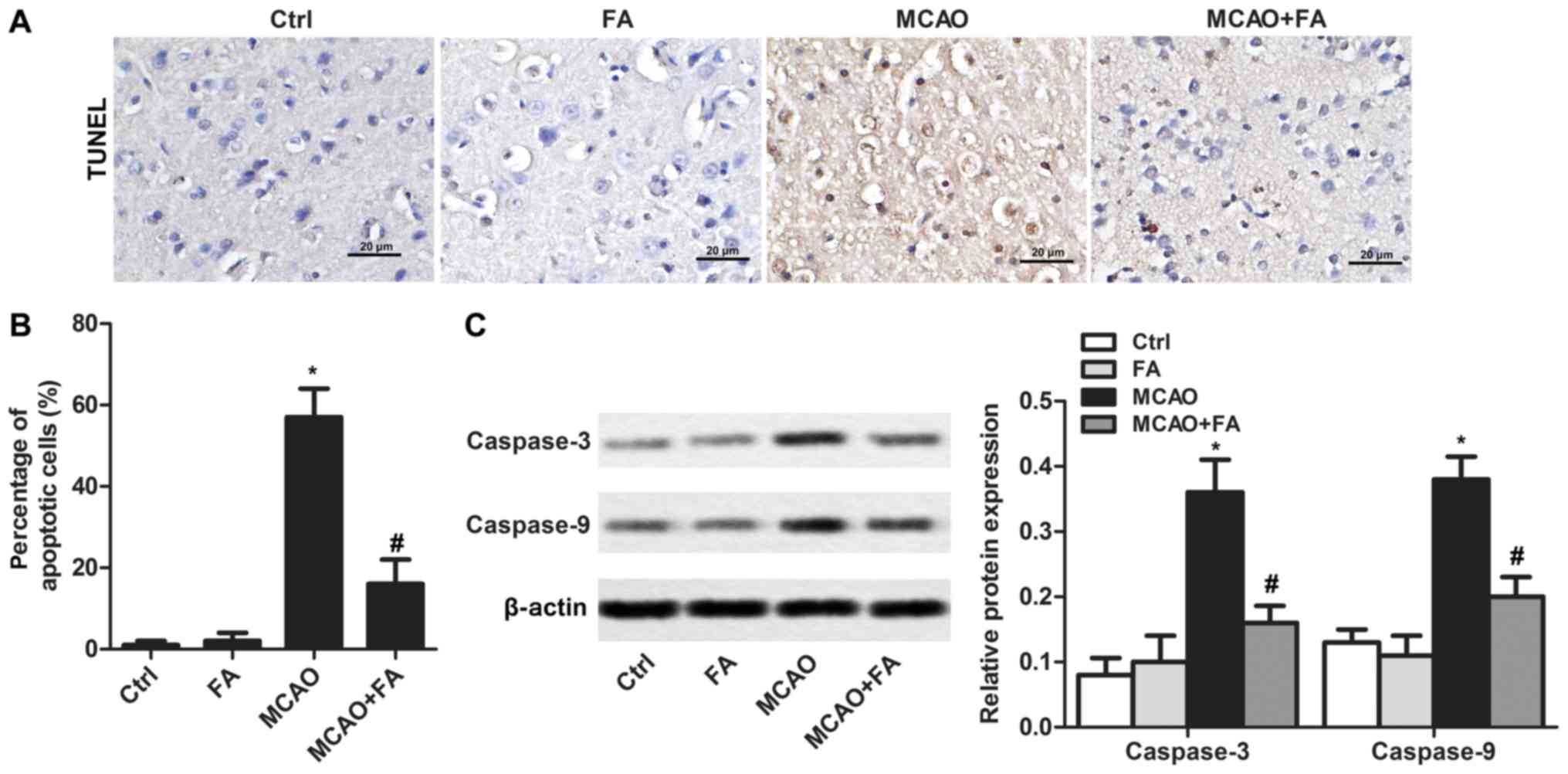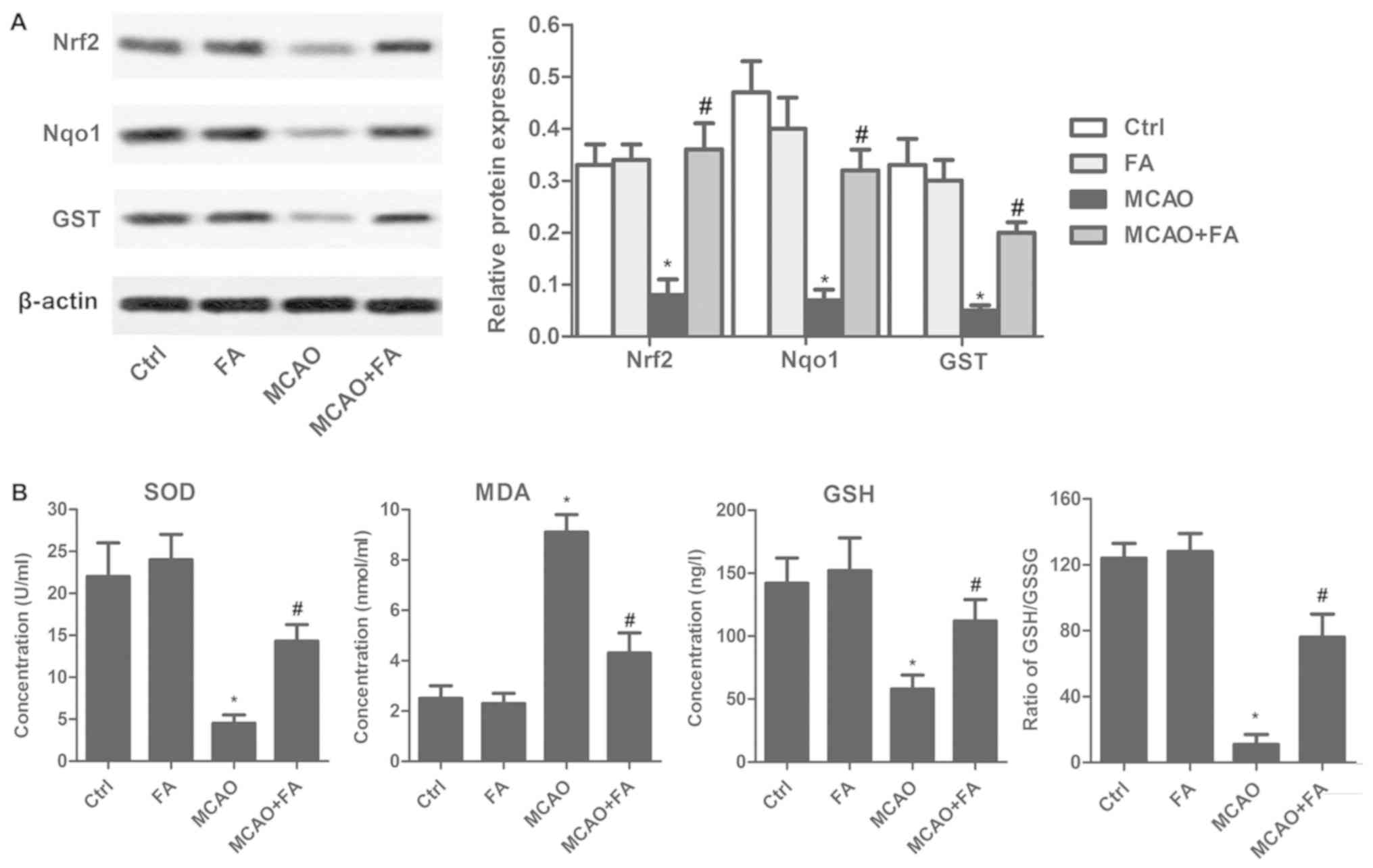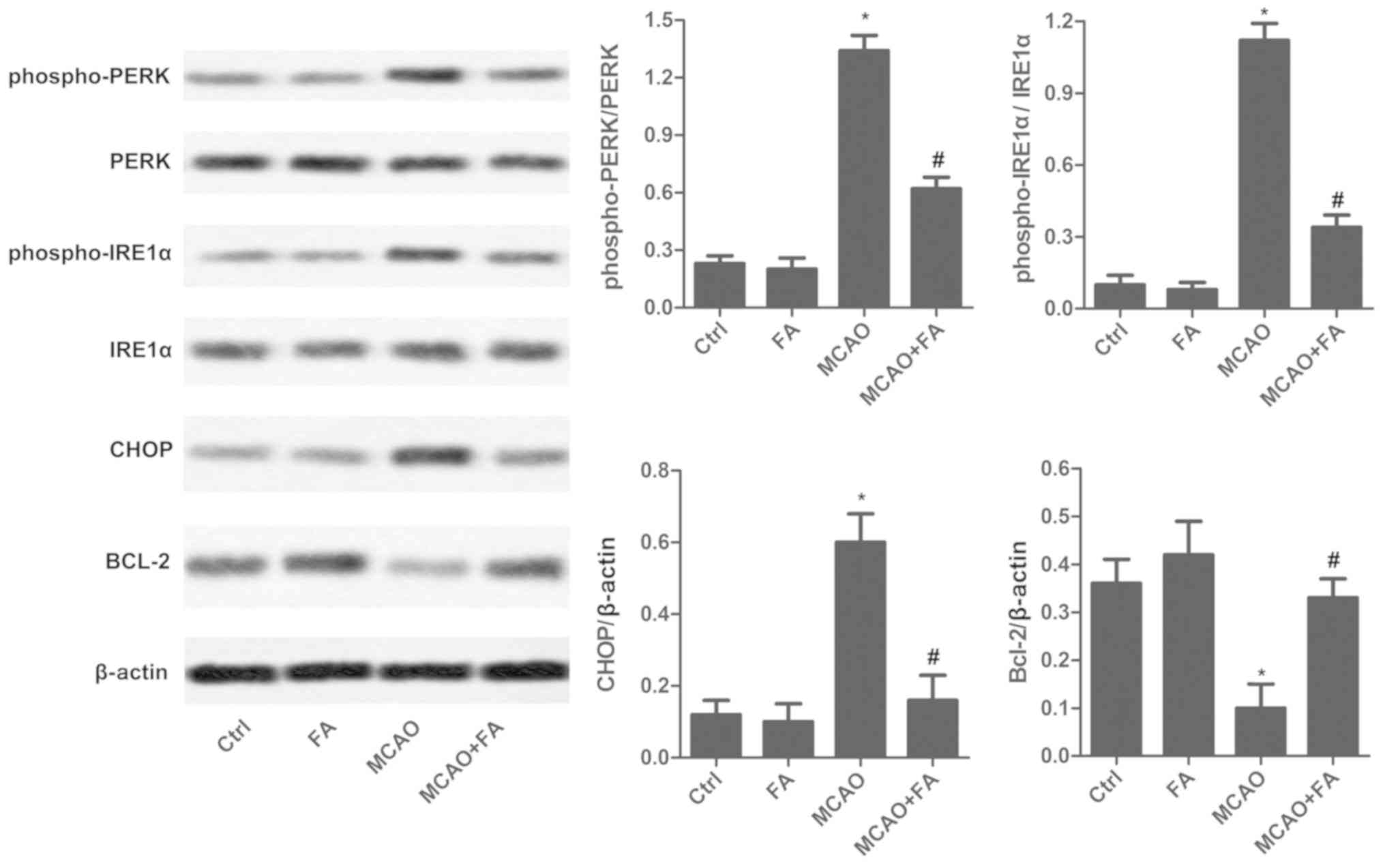|
1
|
Hong KS and Saver JL: Quantifying the
value of stroke disability outcomes: WHO global burden of disease
project disability weights for each level of the modified rankin
scale. Stroke. 40:3828–3833. 2009. View Article : Google Scholar : PubMed/NCBI
|
|
2
|
Laskowitz DT, Bennett ER, Durham RJ, Volpi
JJ, Wiese JR, Frankel M, Shpall E, Wilson JM, Troy J and Kurtzberg
J: Allogeneic umbilical cord blood infusion for adults with
ischemic stroke: Clinical outcomes from a Phase 1 Safety Study.
Stem Cells Transl Med. 521–529. 2018. View Article : Google Scholar : PubMed/NCBI
|
|
3
|
Mayor D and Tymianski M: Neurotransmitters
in the mediation of cerebral ischemic injury. Neuropharmacology.
134:178–188. 2018. View Article : Google Scholar : PubMed/NCBI
|
|
4
|
Napier S: Review of caplan's stroke: A
clinical approach, 4th edition, by louis R. caplan. Neurodiagn J.
57:100–101. 2017. View Article : Google Scholar
|
|
5
|
Badhiwala JH, Nassiri F, Alhazzani W,
Selim MH, Farrokhyar F, Spears J, Kulkarni AV, Singh S, Alqahtani
A, Rochwerg B, et al: Endovascular thrombectomy for acute ischemic
stroke: A meta-analysis. JAMA. 314:1832–1843. 2015. View Article : Google Scholar : PubMed/NCBI
|
|
6
|
Gori AM, Giusti B, Piccardi B, Nencini P,
Palumbo V, Nesi M, Nucera A, Pracucci G, Tonelli P, Innocenti E, et
al: Inflammatory and metalloproteinases profiles predict
three-month poor outcomes in ischemic stroke treated with
thrombolysis. J Cereb Blood Flow Metab. 37:3253–3261. 2017.
View Article : Google Scholar : PubMed/NCBI
|
|
7
|
Pan CW, Zhou GY, Chen WL, Zhuge L, Jin LX,
Zheng Y, Lin W and Pan ZZ: Protective effect of forsythiaside A on
lipopolysaccharide/d-galactosamine-induced liver injury. Int
Immunopharmacol. 26:80–85. 2015. View Article : Google Scholar : PubMed/NCBI
|
|
8
|
Qian J, Ma X, Xun Y and Pan L: Protective
effect of forsythiaside A on OVA-induced asthma in mice. Eur J
Pharmacol. 812:250–255. 2017. View Article : Google Scholar : PubMed/NCBI
|
|
9
|
Deng L, Pang P, Zheng K, Nie J, Xu H, Wu
S, Chen J and Chen X: Forsythoside a controls influenza a virus
infection and improves the prognosis by inhibiting virus
replication in Mice. Molecules. 21(pii): E5242016. View Article : Google Scholar : PubMed/NCBI
|
|
10
|
Cheng Y, Liang X, Feng L, Liu D, Qin M,
Liu S, Liu G and Dong M: Effects of phillyrin and forsythoside A on
rat cytochrome P450 activities in vivo and in vitro. Xenobiotica.
47:297–303. 2017.PubMed/NCBI
|
|
11
|
Kim JM, Kim S, Kim DH, Lee CH, Park SJ,
Jung JW, Ko KH, Cheong JH, Lee SH and Ryu JH: Neuroprotective
effect of forsythiaside against transient cerebral global ischemia
in gerbil. Eur J Pharmacol. 660:326–333. 2011. View Article : Google Scholar : PubMed/NCBI
|
|
12
|
Huang XP, Ding H, Lu JD, Tang YH, Deng BX
and Deng CQ: Autophagy in cerebral ischemia and the effects of
traditional Chinese medicine. J Integr Med. 13:289–296. 2015.
View Article : Google Scholar : PubMed/NCBI
|
|
13
|
Khoshnam SE, Winlow W, Farzaneh M, Farbood
Y and Moghaddam HF: Pathogenic mechanisms following ischemic
stroke. Neurol Sci. 38:1167–1186. 2017. View Article : Google Scholar : PubMed/NCBI
|
|
14
|
Lopez MS, Dempsey RJ and Vemuganti R:
Resveratrol neuroprotection in stroke and traumatic CNS injury.
Neurochem Int. 89:75–82. 2015. View Article : Google Scholar : PubMed/NCBI
|
|
15
|
Galehdar Z, Swan P, Fuerth B, Callaghan
SM, Park DS and Cregan SP: Neuronal apoptosis induced by
endoplasmic reticulum stress is regulated by ATF4-CHOP-mediated
induction of the Bcl-2 homology 3-only member PUMA. J Neurosc.
30:16938–16948. 2010. View Article : Google Scholar
|
|
16
|
Guo H, Li MJ, Liu QQ, Guo LL, Ma MM, Wang
SX, Yu B and Hu LM: Danhong injection attenuates
ischemia/reperfusion-induced brain damage which is associating with
Nrf2 levels in vivo and in vitro. Neurochem Res. 39:1817–1824.
2014. View Article : Google Scholar : PubMed/NCBI
|
|
17
|
Guo H, Adah D, James PB, Liu Q, Li G,
Ahmadu P, Chai L, Wang S, Liu Y and Hu L: Xueshuantong injection
(Lyophilized) attenuates cerebral ischemia/Reperfusion injury by
the activation of Nrf2-VEGF pathway. Neurochem Res. 43:1096–1103.
2018. View Article : Google Scholar : PubMed/NCBI
|
|
18
|
Longa EZ, Weinstein PR, Carlson S and
Cummins R: Reversible middle cerebral artery occlusion without
craniectomy in rats. Stroke. 20:84–91. 1989. View Article : Google Scholar : PubMed/NCBI
|
|
19
|
Prasai PK, Shrestha B, Orr AW and Pattillo
CB: Decreases in GSH:GSSG activate vascular endothelial growth
factor receptor 2 (VEGFR2) in human aortic endothelial cells. Redox
Biol. 19:22–27. 2018. View Article : Google Scholar : PubMed/NCBI
|
|
20
|
Cao L, Waldon D, Teffera Y, Roberts J,
Wells M, Langley M and Zhao Z: Ratios of biliary glutathione
disulfide (GSSG) to glutathione (GSH): A potential index to screen
drug-induced hepatic oxidative stress in rats and mice. Anal
Bioanal Chem. 405:2635–2642. 2013. View Article : Google Scholar : PubMed/NCBI
|
|
21
|
Vanden Berghe T, Linkermann A,
Jouan-Lanhouet S, Walczak H and Vandenabeele P: Regulated necrosis:
The expanding network of non-apoptotic cell death pathways. Nat Rev
Mol Cell Biol. 15:135–147. 2014. View
Article : Google Scholar : PubMed/NCBI
|
|
22
|
Galluzzi L, Bravo-San Pedro JM, Vitale I,
Aaronson SA, Abrams JM, Adam D, Alnemri ES, Altucci L, Andrews D,
Annicchiarico-Petruzzelli M, et al: Essential versus accessory
aspects of cell death: Recommendations of the NCCD 2015. Cell Death
Differ. 22:58–73. 2015. View Article : Google Scholar : PubMed/NCBI
|
|
23
|
Vandenabeele P, Galluzzi L, Vanden Berghe
T and Kroemer G: Molecular mechanisms of necroptosis: An ordered
cellular explosion. Nat Rev Mol Cell Biol. 11:700–714. 2010.
View Article : Google Scholar : PubMed/NCBI
|
|
24
|
Savitskaya MA and Onishchenko GE:
Mechanisms of apoptosis. Biochemistry (Mose). 80:1393–1405. 2015.
View Article : Google Scholar
|
|
25
|
Shin HS, Park SY, Song HG, Hwang E, Lee DG
and Yi TH: The androgenic alopecia protective effects of
forsythiaside-A and the molecular regulation in a mouse model.
Phytother Res. 29:870–876. 2015. View
Article : Google Scholar : PubMed/NCBI
|
|
26
|
Song QJ, Weng XG, Cai DJ, Zhang W and Wang
JF: Forsythoside a inhibits BVDV replication via TRAF2-dependent
CD28-4-1BB signaling in bovine PBMCs. PLoS One. 11:e01627912016.
View Article : Google Scholar : PubMed/NCBI
|
|
27
|
Jiang S, Deng C, Lv J, Fan C, Hu W, Di S,
Yan X, Ma Z, Liang Z and Yang Y: Nrf2 weaves an elaborate network
of neuroprotection against stroke. Mol Neurobiol. 54:1440–1455.
2017. View Article : Google Scholar : PubMed/NCBI
|
|
28
|
Liu X, Liu J, Zhao S, Zhang H, Cai W, Cai
M, Ji X, Leak RK, Gao Y, Chen J and Hu X: Interleukin-4 is
essential for microglia/macrophage M2 polarization and long-term
recovery after cerebral ischemia. Stroke. 47:498–504. 2016.
View Article : Google Scholar : PubMed/NCBI
|
|
29
|
Oh YS and Jun HS: Effects of glucagon-like
peptide-1 on oxidative stress and Nrf2 signaling. Int J Mol Sci.
19(pii): E262017. View Article : Google Scholar : PubMed/NCBI
|
|
30
|
Meng J, Lv Z, Qiao X, Li X, Li Y, Zhang Y
and Chen C: The decay of redox-stress response capacity is a
substantive characteristic of aging: Revising the redox theory of
aging. Redox Biol. 11:365–374. 2017. View Article : Google Scholar : PubMed/NCBI
|
|
31
|
Wang Y, Zhao H, Lin C, Ren J and Zhang S:
Forsythiaside a exhibits anti-inflammatory effects in
LPS-stimulated BV2 microglia cells through activation of Nrf2/HO-1
signaling pathway. Neurochem Res. 41:659–665. 2016. View Article : Google Scholar : PubMed/NCBI
|
|
32
|
Wang HM, Wang LW, Liu XM, Li CL, Xu SP and
Farooq AD: Neuroprotective effects of forsythiaside on learning and
memory deficits in senescence-accelerated mouse prone (SAMP8) mice.
Pharmacol Biochem Behav. 105:134–141. 2013. View Article : Google Scholar : PubMed/NCBI
|
|
33
|
Huang C, Lin Y, Su H and Ye D:
Forsythiaside protects against hydrogen peroxide-induced oxidative
stress and apoptosis in PC12 cell. Neurochem Res. 40:27–35. 2015.
View Article : Google Scholar : PubMed/NCBI
|
|
34
|
Ramezani A, Nahad MP and Faghihloo E: The
role of Nrf2 transcription factor in viral infection. J Cell
Biochem. 119:6366–6382. 2018. View Article : Google Scholar : PubMed/NCBI
|
|
35
|
Bottino-Rojas V, Talyuli OAC, Carrara L,
Martins AJ, James AA, Oliveira PL and Paiva-Silva GO: The
redox-sensing gene Nrf2 affects intestinal homeostasis, insecticide
resistance, and Zika virus susceptibility in the mosquito Aedes
aegypti. J Biol Chem. 293:9053–9063. 2018. View Article : Google Scholar : PubMed/NCBI
|
|
36
|
Tanaka N, Ikeda Y, Ohta Y, Deguchi K, Tian
F, Shang J, Matsuura T and Abe K: Expression of Keap1-Nrf2 system
and antioxidative proteins in mouse brain after transient middle
cerebral artery occlusion. Brain Res. 1370:246–253. 2011.
View Article : Google Scholar : PubMed/NCBI
|
|
37
|
Lou J, Cao G, Li R, Liu J, Dong Z and Xu
L: β-caryophyllene attenuates focal cerebral ischemia-reperfusion
injury by Nrf2/HO-1 pathway in Rats. Neurochem Res. 41:1291–1304.
2016. View Article : Google Scholar : PubMed/NCBI
|
|
38
|
Zhang Y, Fan L, Li H, Wang X, Xu W, Chu K
and Lin Y: Gualou guizhi granule protects against oxidative injury
by activating Nrf2/ARE pathway in rats and PC12 cells. Neurochem
Res. 43:1003–1009. 2018. View Article : Google Scholar : PubMed/NCBI
|
|
39
|
Zitka O, Skalickova S, Gumulec J, Masarik
M, Adam V, Hubalek J, Trnkova L, Kruseova J, Eckschlager T and
Kizek R: Redox status expressed as GSH:GSSG ratio as a marker for
oxidative stress in paediatric tumour patients. Oncol Lett.
4:1247–1253. 2012. View Article : Google Scholar : PubMed/NCBI
|
|
40
|
Noctor G and Foyer CH: ASCORBATE AND
GLUTATHIONE: Keeping active oxygen under control. Ann Rev Plant
Physiol Plant Mol Biol. 49:249–279. 1998. View Article : Google Scholar
|
|
41
|
Sentellas S, Morales-Ibanez O, Zanuy M and
Alberti JJ: GSSG/GSH ratios in cryopreserved rat and human
hepatocytes as a biomarker for drug induced oxidative stress.
Toxicol in vitro. 28:1006–1015. 2014. View Article : Google Scholar : PubMed/NCBI
|
|
42
|
Chai YC, Ashraf SS, Rokutan K, Johnston RB
Jr and Thomas JA: S-thiolation of individual human neutrophil
proteins including actin by stimulation of the respiratory burst:
Evidence against a role for glutathione disulfide. Arch Biochem
Biophys. 310:273–281. 1994. View Article : Google Scholar : PubMed/NCBI
|
|
43
|
Bravo R, Parra V, Gatica D, Rodriguez AE,
Torrealba N, Paredes F, Wang ZV, Zorzano A, Hill JA, Jaimovich E,
et al: Endoplasmic reticulum and the unfolded protein response:
dynamics and metabolic integration. Int Rev Cell Mol Biol.
301:215–290. 2013. View Article : Google Scholar : PubMed/NCBI
|
|
44
|
Chen D, Dixon BJ, Doycheva DM, Li B, Zhang
Y, Hu Q, He Y, Guo Z, Nowrangi D, Flores J, et al: IRE1α inhibition
decreased TXNIP/NLRP3 inflammasome activation through miR-17-5p
after neonatal hypoxic-ischemic brain injury in rats. J
Neuroinflammation. 15:322018. View Article : Google Scholar : PubMed/NCBI
|
|
45
|
Schroder M and Kaufman RJ: ER stress and
the unfolded protein response. Mutat Res. 569:29–63. 2005.
View Article : Google Scholar : PubMed/NCBI
|
|
46
|
Malhi H and Kaufman RJ: Endoplasmic
reticulum stress in liver disease. J Hepatol. 54:795–809. 2011.
View Article : Google Scholar : PubMed/NCBI
|


















